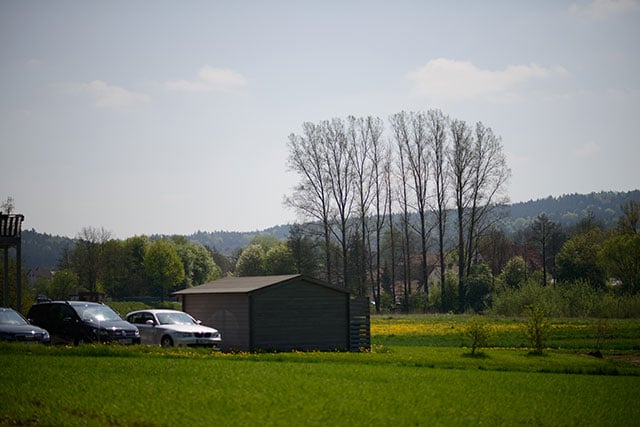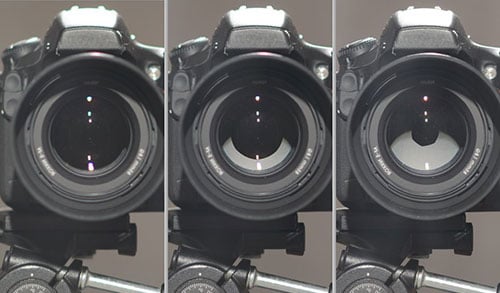Nikon 85mm f1.8G review
-
-
Written by Thomas
Quality
Testing: Longitudinal Chromatic Aberration
With large aperture primes one of the first tests I perform is for longitudinal CA (loCA, a.k.a. “axial color” or “bokeh CA”) and it normally shows some pretty nasty coloration unless you have a very expensive apochromatic lens. The 85/1.8G is no exception and shows quite some amount of loCA. Left is the result for the AF-S 85/1.8G showing a 47% crop at f1.8. At f5.6 the greenish (background) and reddish (foreground) hues are almost gone – but not completely. On the right you see the same image processed in Capture NX 2 with loCA removal = 100% – quite effective. The effectiveness of loCA-removal in Lightroom version 4.1 was not tested at the time of writing.
Nikkor AF-S 85mm f/1.8G Longitudinal Chromatic Aberration (loCA) | ||
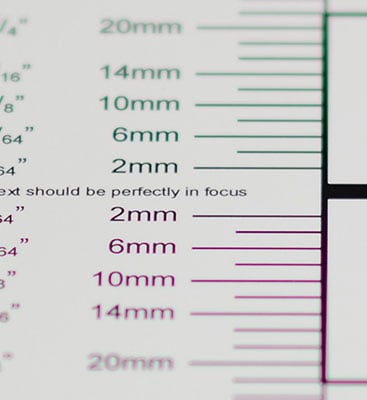 | 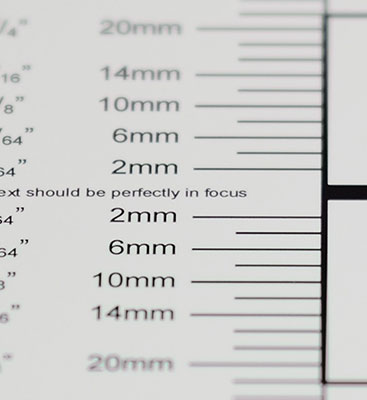 | |
| 47% crop, f1.8, loCA removal OFF in Capture NX2 | 47% crop, f1.8, loCA removal 100% in Capture NX2 | |
The effect looks pretty bad here, but this is a worst case. With subjects that are further away it is nowhere near as pronounced. And what is especially positive: Shooting trees against a glaring sky does not produce those horrible ghostlike magenta twigs that its predecessor was so prone of. Only the second of the crops shows some hints of “magenta ghosting”.
| Chromatic Aberration test: shot with Nikon Nikkor 85/1.8G on a D800 | ||||
| f1.8, 100 ISO | ||||
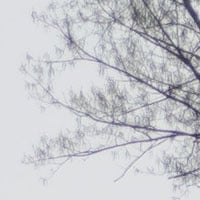 | 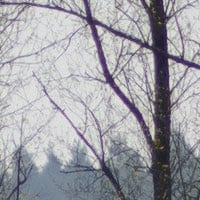 | 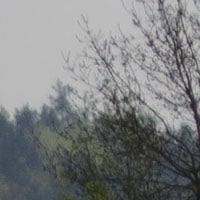 | ||
f1.8, 100 ISO | f1.8, 100 ISO | f1.8, 100 ISO | ||
By the way: This is also a shot where you can see the effect of vignetting wide open as I did not correct it in post-processing. Plus there are some specular highlights on the cars-bodies to the left that show the amount of purple fringing that you can expect from this lens. The effect is clearly visible in the large version of the image that you can access by clicking on the image above. But it is not excessive.
Sharpness and contrast
Let’s have a look at the theoretical performance (MTF-charts) of the new lens and its predecessor first:
Nikkor 85mm f/1.8 MTF | ||
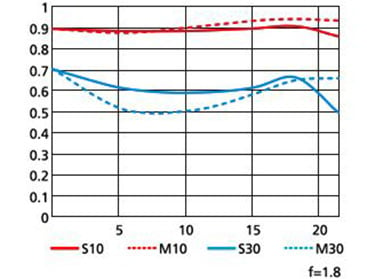 | 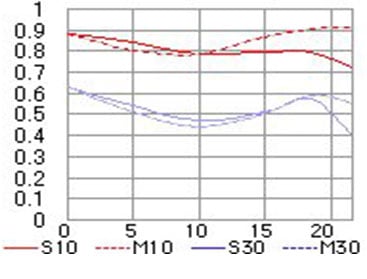 | |
| The new Nikkor AF-S 85/1.8G | Its predecessor, the Nikkor AF 85/1.8D | |
These charts show the lens-performance at the largest aperture, in this case for f1.8. To read these charts you only have to understand that higher values are better and that the closer the dotted and the continuous lines of each color are together the less astigmatism (= resolution depends on the orientation of the test-pattern) the lens has. The x-axis displays the distance from the optical axis (=center of the sensor) in mm. I’ll show you the real-life performance at 4 mm (center), 13 mm (DX-corner), and 20 mm (FX-corner) on a D800.
From the charts the new lens should perform better than the old one. But the new design has a little problem with astigmatism at very fine structures (S30/M30) between 4 mm and 14 mm from the center. But let’s see how this theoretical performance translates into real life results in the sharpness test based on Siemens-stars.
I present near-center results (first column) followed by DX-corner results and FX-corner results on a D800. This makes the following crops incomparable to the crops shown in my previous test on a D300 (15% less linear resolution than a D800) and D700 (42% less linear resolution). It does also mean that the D800 results from the DX-corner may not even be identical to the results from the same lens on a D7000, although the pixel-pitch of both sensors are the same. Differences in the AA-filter and micro-lens-design of a D800 and a D7000 might be the reasons for this. But the results shown here should at least be a very good approximation for performance on a 16MP DX sensor. Just keep that in mind, when you look at the results compare them with my previous reviews.
Processing was done in Lightroom 4 from RAW at camera standard settings. This is another deviation from my former test-standards and was triggered by a close comparison of both RAW-converters: Lightroom 4 has a sharpening algorithm that can be better tuned for small details than CaptureNX2. Noise-reduction is set to 0, sharpening to 70/0.5/36/10, with no extra tone, color, or saturation adjustment. White-balance was adjusted to a neutral white and I did some exposure compensation to make the brightness match. CA-removal is ON. Focus was achieved in live-view (contrast-based) at f1.8.
These are 100% crops!
Nikkor AF-S 85mm f/1.8G with Nikon D800 100% crop from center | Nikkor AF-S 85mm f/1.8G with Nikon D800 100% crop from DX-corner | Nikkor AF-S 85mm f/1.8G with Nikon D800 100% crop from FX-corner | ||
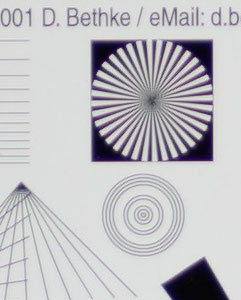 | 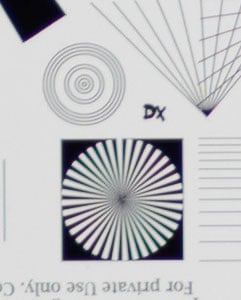 | 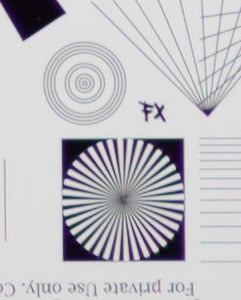 | ||
f1.8, 100 ISO | f1.8, 100 ISO | f1.8, 100 ISO | ||
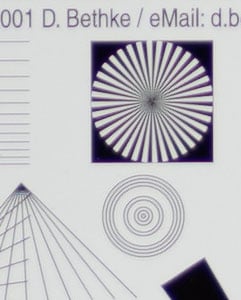 | 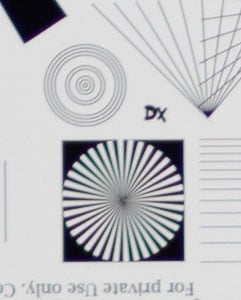 | 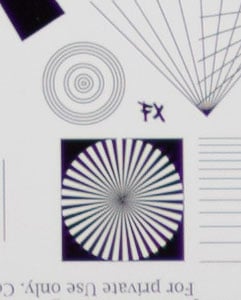 | ||
f2.0, 100 ISO | f2.0, 100 ISO | f2.0, 100 ISO | ||
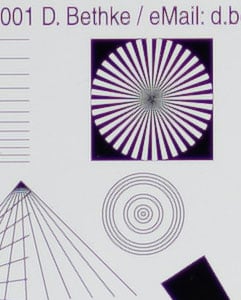 | 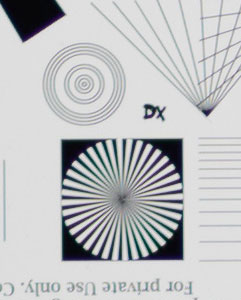 | 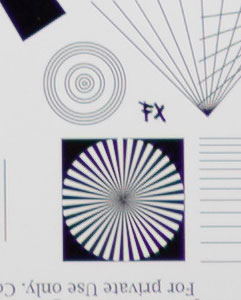 | ||
f2.8, 100 ISO | f2.8, 100 ISO | f2.8, 100 ISO | ||
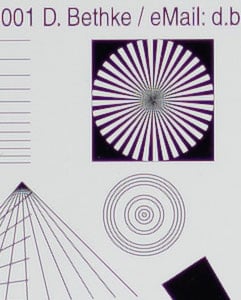 | 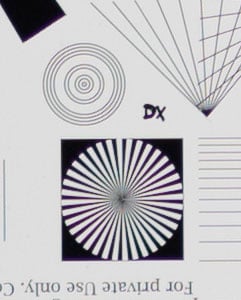 | 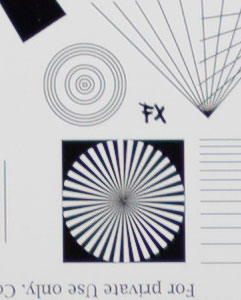 | ||
f4.0, 100 ISO | f4.0, 100 ISO | f4.0, 100 ISO | ||
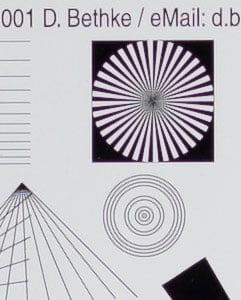 | 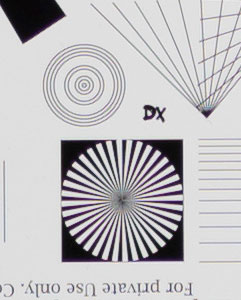 | 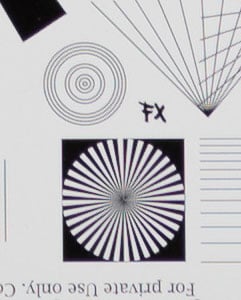 | ||
f5.6, 100 ISO | f5.6, 100 ISO | f5.6, 100 ISO | ||
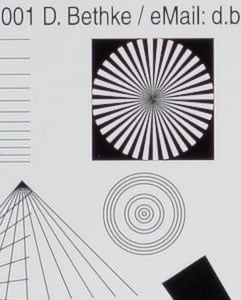 | 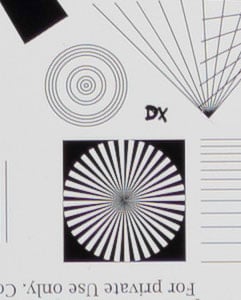 | 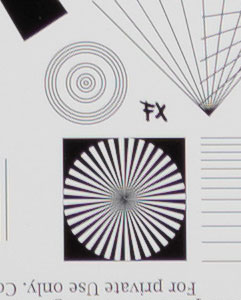 | ||
f8, 100 ISO | f8, 100 ISO | f8, 100 ISO |
These 100% crops directly from a 36MP D800 sensor are proof of the incredible sharpness of this lens. Even wide open center resolution is very high and astigmatism is not really an issue. Deterioration of image-quality in the FX-corner is astonishingly small with the coloration of the small Siemens-star indicative of some astigmatism, but the concentric circles still showing very good definition. The astigmatism in the DX-corner is more pronounced with the circles now clearly loosing definition on the 11-to-5 diagonal. Interestingly the Siemens-stars in the DX-corner vs FX-corner show that the orientation of the magenta/green colorations has turned 90°: that is in line with the MTF chart showing that the sagittal and meridional performance (S30, M30) have switched position between 13mm and 20mm. Does this lab-performance regarding the DX-corner show in real-life images? You bet! I have one shot where you can clearly see the sharpness take a dip somewhere at 50-70% from the center of an FX-frame and sharpen up again when going further in the direction of the FX-corner.
Stopping down to f2.0 does almost nothing for the performance of this lens. But at f2.8 we get a marked improvement in the center-performance albeit with some sign of focus shift (thus the magenta coloring). The corners profit only a little at f2.8 but become visibly better at f4.0. At f5.6 the effects of focus-shift and astigmatism are almost gone and at f8 we get a perfect, almost apochromatic performance all over the image circle with just a hint of diffraction setting in. But have a look again at the FX-corner at f8 and scroll back to f1.8 and you see how little performance degradation you get when using this lens wide open. This is what I’d call an excellent performance.
Sagittal coma flare
This is something that influences corner performance by producing odd shapes out of point-light sources. Some large aperture primes are quite prone to this effect, as you can see in my Nikon 50mm f1.4G review. The 85/1.8G behaves clearly better in this respect as you would expect from the fantastic results above: Coma is almost gone at f2.8.
Nikkor AF-S 85mm f/1.8G with Nikon D700 | Nikkor AF-S 85mm f/1.8G with Nikon D800 | Nikkor AF-S 85mm f/1.8G with Nikon D800 | ||
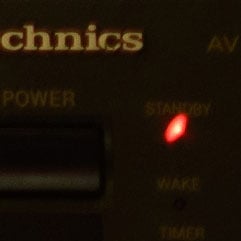 | 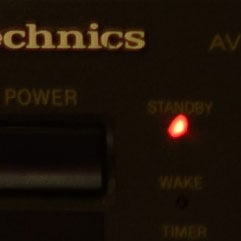 | 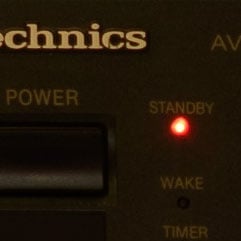 | ||
f1.8, 100 ISO | f2.8, 100 ISO | f5.6, 100 ISO | ||
|
Behavior in contra-light
The image on the right shows a sequence of shots against a strong light-source shining directly into the lens but still outside the image circle of a FX-body. It shows how well the lens copes under these adverse conditions wide open and stopped down to f2.8 and f5.6.
Some lenses simply produce lower contrast when closing the aperture, although that should minimize stray-light in the lens. But unfortunately the reflections from the aperture itself sometimes cause some veiling glare.
You can judge the effect if you look at the shadows at the lower left of the camera body and the mounting-plate. The shadows become deeper when stopping down to f2.8 which is good. But at f5.6 shadows get lighter and the overall image contrast and dynamic range is reduced visibly. The effect is not too dramatic but reminds you that for optimal results you should prevent the sun from shining directly into the lens.
